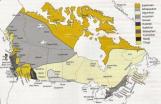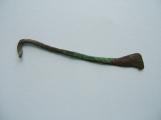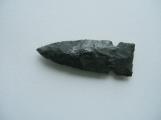1
LIFE BEFORE EUROPEAN CONTACT.
2
First Nations tribe map.
16 July 2005
Canada

3
For the most part, the Aboriginal population was thinly scattered, with principal concentrations on the Pacific Northwest coast and the lower Great Lakes region. For those engaged in hunting, fishing and gathering, economic activity varied according to the seasonal pattern of their major food sources. Depending on what the natural environment made available, the summer might be a time for congregating at the mouths of rivers for fishing and hunting sea mammals, supplemented by gathering berries, nuts and roots.
4
Superior Copper fish hook approx. 5000 years old.
Date not available

5
Before contact with Europeans, most Aboriginal people in the northern half of North America were hunters, fishers and gatherers. Those with access to the Pacific, Arctic and Atlantic coasts had an economy that included substantial sea harvesting, while those living in the St. Lawrence Valley and the Great Lakes region engaged in agriculture. The Ojibway occupied a large territory encompassing all the northern shores of Lake Huron and Lake Superior from Georgian Bay to the edge of the Prairies, and to the height of the land north where the rivers begin to flow towards Hudson Bay.
6
Stone arrowhead approx. 2000 years old.
Date not available

7
The emphasis was on living in balance with nature rather than on accumulating economic surplus or wealth. This generally meant meeting the food needs of the group and sustaining the ability of the land and sea to continue to provide for its inhabitants well into the future. The abundance of natural resources varied considerable from one region to another. Where a surplus of a particular product was generated, it provided a basis for trade within and among Aboriginal nations. Agricultural producers living in what are now southern Ontario and the St. Lawrence Valley supplied corn and other products to those without an agricultural base, exchanging them for fish or furs. Extensive commercial networks also existed in areas such as the northwest coast, where foodstuffs were transported between the coast and the interior.
8
Information provided with permission from the Ontario Metis Aboriginal Association's website.